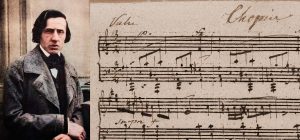Piano Forum
 |
The Complete Piano Works of 16 Composers Piano Street’s digital sheet music library is constantly growing. With the additions made during the past months, we now offer the complete solo piano works by sixteen of the most famous Classical, Romantic and Impressionist composers in the web’s most pianist friendly user interface. Read more >> |
Pages: [1] Go Down
Pages: [1] Go Up
For more information about this topic, click search below!
 |
New Piano Piece by Chopin Discovered – Free Piano Score A previously unknown manuscript by Frédéric Chopin has been discovered at New York’s Morgan Library and Museum. The handwritten score is titled “Valse” and consists of 24 bars of music in the key of A minor and is considered a major discovery in the wold of classical piano music. Read more >> |
 Topic: What does your edition say (Dante sonata)
Topic: What does your edition say (Dante sonata)